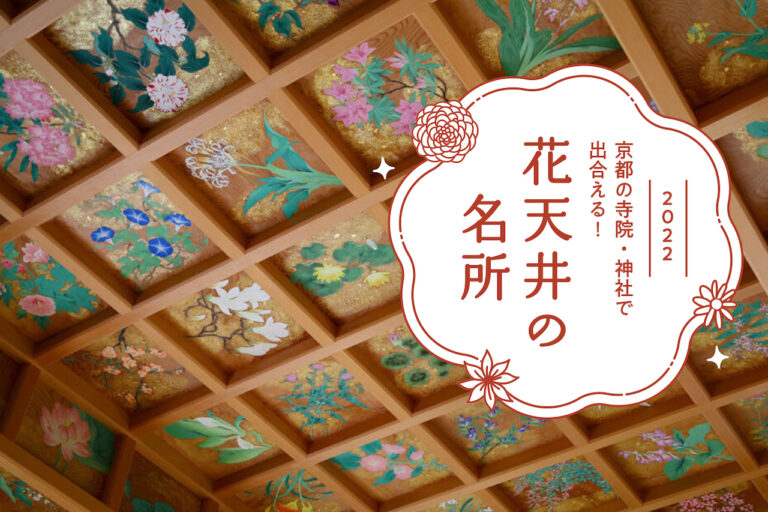
Meet at Temples and Shrines in Kyoto! 10 Places to Visit for Flower Ceilings
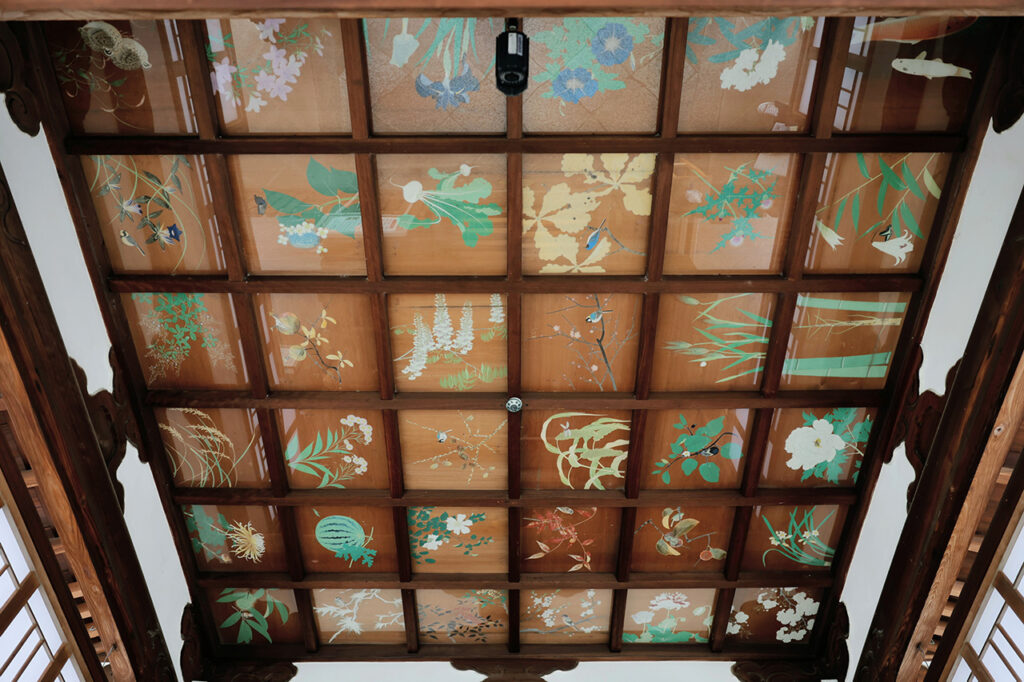

Kurumaori Shrine is dedicated to Kiyohara Yoriyoshi, a Confucian scholar of the Heian period. In addition to being a god of learning, the shrine is also known for its blessings such as prosperous business, financial fortune, and good marriage. The hana-tei (flower ceiling) is located in the hall of worship leading to the main hall. Looking up, one can see 36 paintings spread all over the shrine, which is a sight to behold.
Kurumaori Shrine is dedicated to Kiyohara Yoriyoshi, a Confucian scholar from the late Heian period. In addition to being a god of scholarship, he was known for his "faithfulness to his word," and is also known to bring good luck in business, money, and good marriage. The flower ceiling is located in the hall of worship leading to the main shrine. When you look up, you will see 36 paintings all over the shrine. The motifs are lilies, hydrangeas, and kiku flowers, as well as vegetables such as watermelons and turnips, swimming fish, and birds perched on tree branches. The shrine's Shinto priest says, "They watch over everyone who pays homage to the shrine.
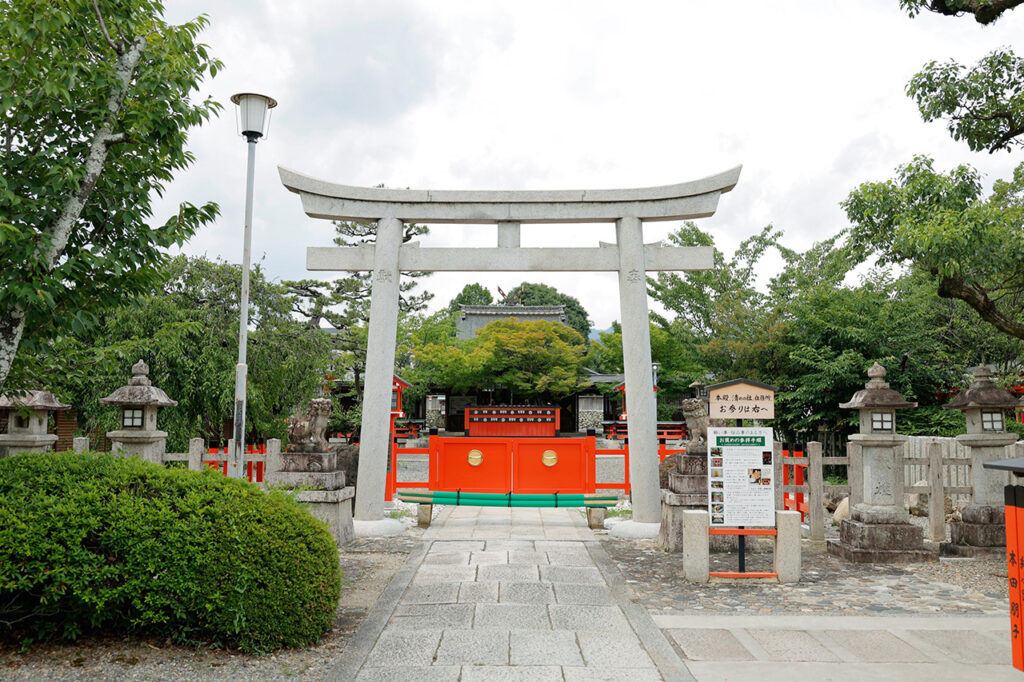


By Reiki Yamaguchi, active in the Taisho and Showa periods

The date of production is unknown, but the painting already existed when the shrine was completely renovated in 1988. The artist is Reiki Yamaguchi, a Japanese-style painter active from the Taisho to Showa periods.
The deity is Ame-no-Uzume-no-mikoto, the god of the performing arts. The number of vermilion-lacquered tamagaki (stone walls) that have been built by people involved in the performing arts who come to visit the shrine totals approximately 4,000. After visiting the shrine, visitors can enjoy looking at the rows of tamagaki along the approach to the shrine.
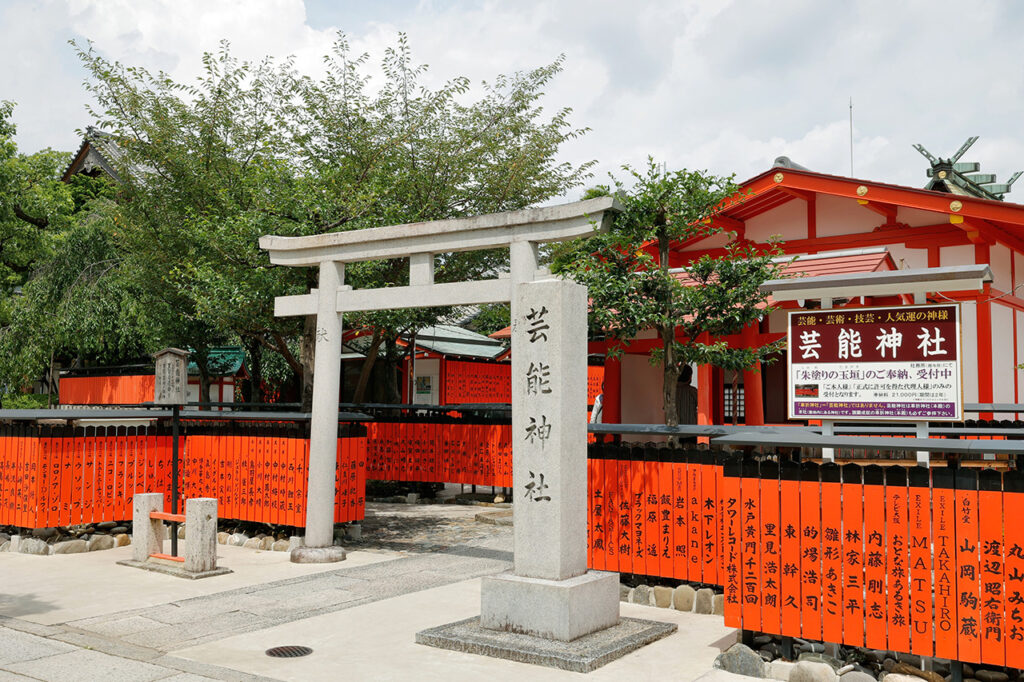

A good-luck charm containing a stone. This tradition began in the Edo period (1603-1867) when the wishes of people who picked up a stone from Kurumaori Shrine and returned home were fulfilled. The person would visit the shrine with the stone, and if his/her wish was fulfilled, he/she would return the stone and another stone with a word of thanks.
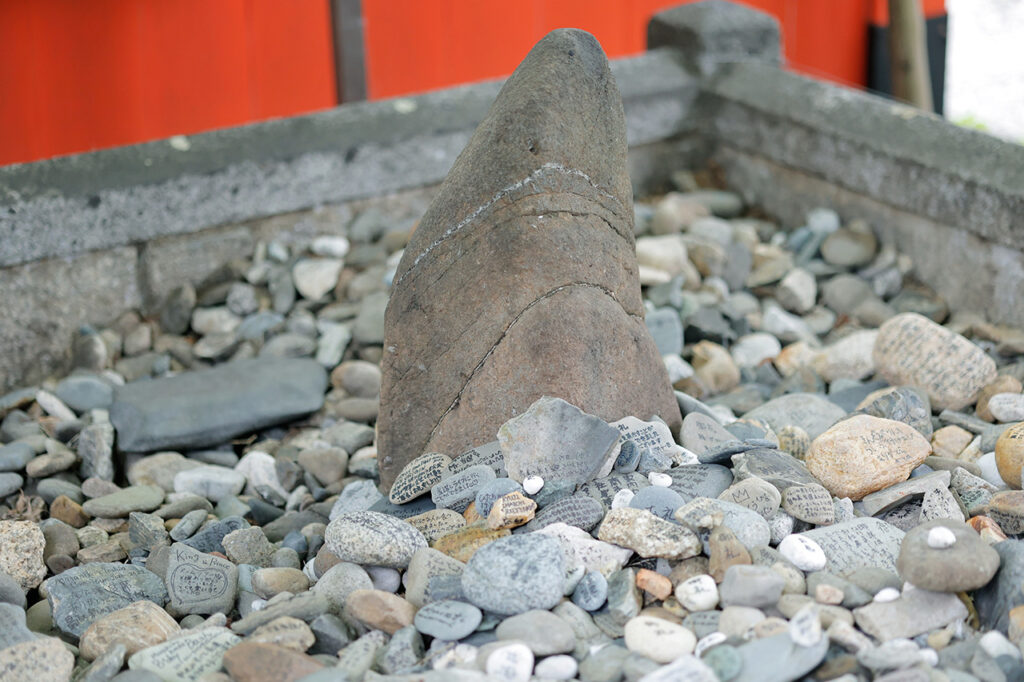

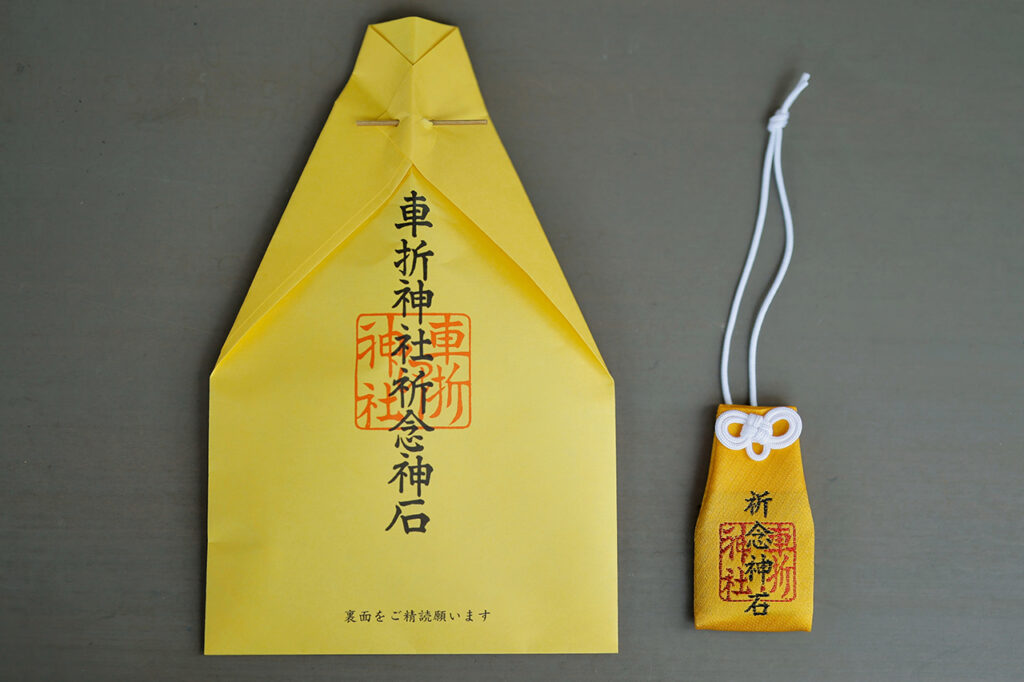

A shrine of purification where a huge conical stone is enshrined. It is said to be an image of standing sand, and is said to drive away bad karma and bring in good karma. It is said that it is good to take a picture of the stone and wear it, and many people use it as a standby for their cell phones.
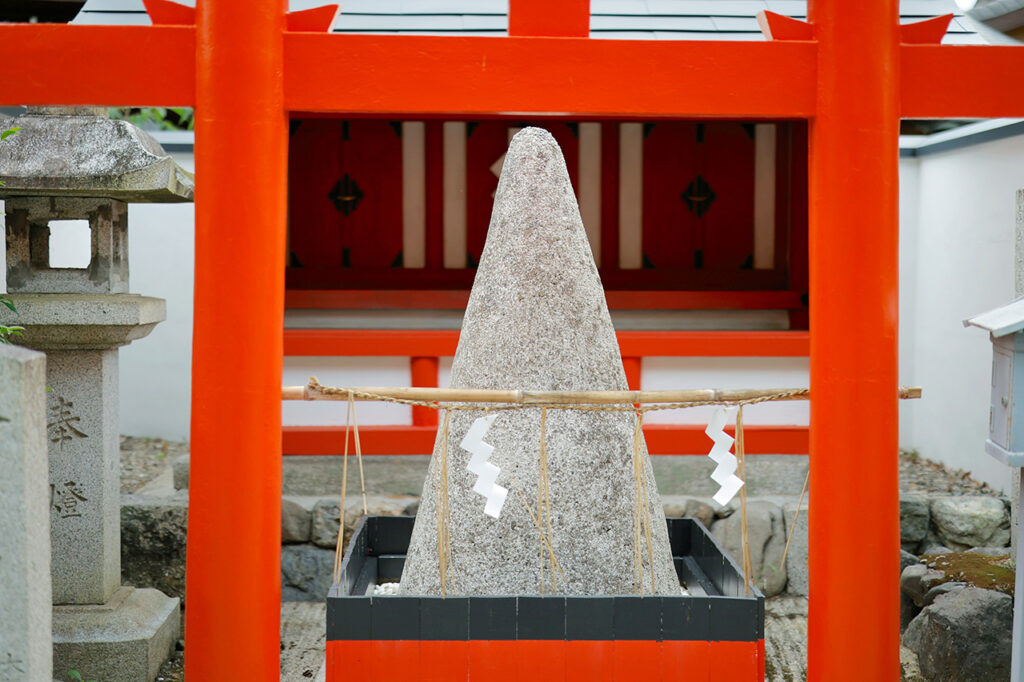

[Cherry blossom viewing information]
Best time to visit: Early March to late April
Hours of visitation/9:30-17:00
Entrance fee/free in the precincts
Over 600 interviews per year! An order site carefully selected by the editors who knows Kyoto and Shiga.
nowOfficial LINE friend registration500 yen OFF coupon is being issued!
Distributed every Friday morning at 8:00 am! From new restaurant information to event information that we want to share with you, We deliver articles about Kyoto that are useful to know. About 20,000 people have registered.Click here to add a friend!
 News
News Feature article
Feature article Featured event
Featured event